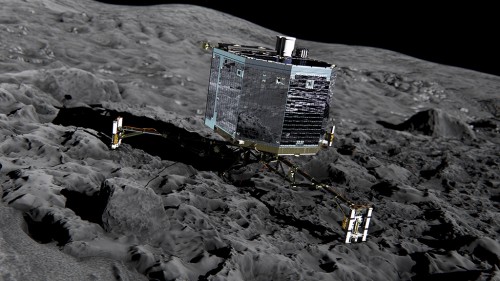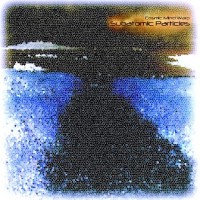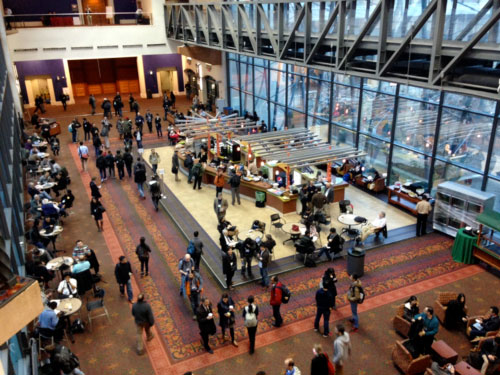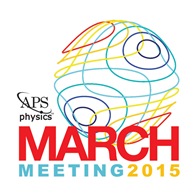Posts by: Michael Banks
A telescope for the Year of Light

The Galileoscope – yours for only $25.
By Michael Banks
Avid readers of physicsworld.com may remember the Galileoscope – a low-cost educational telescope kit that was released for the International Year of Astronomy in 2009.
The telescope marked the 400th anniversary of Galileo’s first telescope, which he presented to policy-makers from the Venetian Republic on 25 August 1609.
View all posts by this author | View this author's profile
Philae comet lander set for reboot

Here comes the Sun: the Philae lander may reawaken soon. (Courtesy: ESA/ATG medialab)
By Michael Banks
Scientists at the European Space Agency (ESA) are hoping that the Philae lander, which successfully landed on a comet last year, will re-establish contact soon as it travels closer to the Sun. Philae was part of ESA’s Rosetta mission that was launched in 2004 but when Philae separated from Rosetta in November, it landed on the comet in an awkward position. This meant that the craft’s solar panels did not receive enough sunlight to recharge its battery, but the lander’s 10 instruments were able to carry out measurements before it went into hibernation mode about 50 hours after landing.
View all posts by this author | View this author's profile
Littered with errors
By Michael Banks
 Cat litter and radioactive waste – not a combination you would normally expect to come across (although some cat owners may disagree).
Cat litter and radioactive waste – not a combination you would normally expect to come across (although some cat owners may disagree).
But a report by the US Department of Energy has squarely blamed kitty litter for the explosion of a single drum of nuclear waste – dubbed “68660” – that burst open at the Waste Isolation Pilot Plant (WIPP) in New Mexico in February 2014.
A year-long investigation by a nine-member panel – led by David Wilson of the Savannah River National Laboratory – has concluded that the incident was caused by the use of the wrong brand of feline litter.
As cat litter is highly absorbent, for years it has been used to help keep nuclear waste contained. Indeed, each barrel of waste at the WIPP is filled with about 26 kg of the stuff.
View all posts by this author | View this author's profile
Particle-physics electronica
By Michael Banks
Fancy a bit of particle-physics electronica?
 Then make sure you download the latest album from Isle of Wight electronic duo Cosmic Mind Warp.
Then make sure you download the latest album from Isle of Wight electronic duo Cosmic Mind Warp.
In a “unique crossover” between the worlds of cosmology, quantum physics and electronic music, Alister Staniland and David Holmberg have just released a new concept album dubbed Subatomic Particles.
The 15-track album, which features songs such as “Large Hadron Collider”, “Quantum Tunnelling” and “Down Quark”, is described by the duo as a “hallucinogenic head-trip through the microscopic world of subatomic particles and the strangeness of quantum physics”.
View all posts by this author | View this author's profile
Zombie outbreaks in San Antonio

Where are you going to run to? (Courtesy: iStockphoto/Renphoto)
By Michael Banks in San Antonio, Texas
If you ever find yourself in the unfortunate position of trying to survive a zombie apocalypse in the US, what should you do?
Well, according to Alex Alemi of Cornell University and colleagues, you should head to the Rocky Mountains or the Nevada desert.
Using 2010 US census data for population levels around the country, Alemi and colleagues used statistical mechanics to model how a zombie outbreak would spread.
Celebrating a year of light

Shuji Nakamura talks to delegates about blue light-emitting diodes.
By Michael Banks in San Antonio, Texas
With 2015 being the International Year of Light it is perhaps the perfect opportunity to have a session at this year’s American Physical Society meeting in San Antonio dedicated to the forefront of optics research.
Yesterday afternoon saw a number of light pioneers update delegates about their research. The session boasted three of last year’s Nobel-prize winners: Stefan Hell of the Max Planck Institute for Biophysical Chemistry in Gottingen, Germany; William Moerner of Stanford University; and Shuji Nakamura of the University of California, Santa Barbara.
Supporting industrial physicists
By Michael Banks in San Antonio, Texas
Here is a stat for you: around 50% of US physics graduates (both undergraduates and postgraduates) go on to work in industry.
Whether you think that is good or bad, the American Physical Society (APS) wants to do more to support those physicists who don’t pursue a career in academia.
View all posts by this author | View this author's profile
Weighty matters

March maze. The conference centre for the APS meeting.
By Michael Banks in San Antonio, Texas
After finally getting my head round the maze-like Henry B Gonzalez Convention Center in San Antonio, it was straight into a packed schedule at this year’s American Physical Society (APS) meeting.
One topic that always causes concern among researchers is the crunch in helium supply.
View all posts by this author | View this author's profile
Texas bound
By Michael Banks
Suitcase packed, I am now on the way to San Antonio for the 2015 American Physical Society (APS) meeting, which begins on Monday.
More than 9000 physicists will be heading to Texas for one of the biggest physics meetings of the year.
Having just put the finishing touches to my schedule for the five-day conference, we should be set to hear exciting results on mechanically programmable materials, the first metamaterial superconductor and the latest in flexible, stretchable electronics.
Yet there is also a more fun side to the conference with delegates also learning about modelling zombie outbreaks as well as participating in the famous APS physics sing-along.
So keep tabs on physicsworld.com for all the latest from the 2015 APS meeting.
View all posts by this author | View this author's profile
The LEGO Large Hadron Collider

LEGO Large Hadron Collider.
By Michael Banks
Avid readers of this blog may remember the 560-piece LEGO model of CERN’s ATLAS detector at the Large Hadron Collider (LHC), which was built by particle physicist Sascha Mehlhase of the Niels Bohr Institute in Copenhagen.
Not to be outdone, LEGO fan Jason Allemann then created a LEGO-inspired particle accelerator – dubbed the LEGO Brick Collider – that was submitted to the LEGO Ideas site, which lets fans share blueprints of their own models.
View all posts by this author | View this author's profile